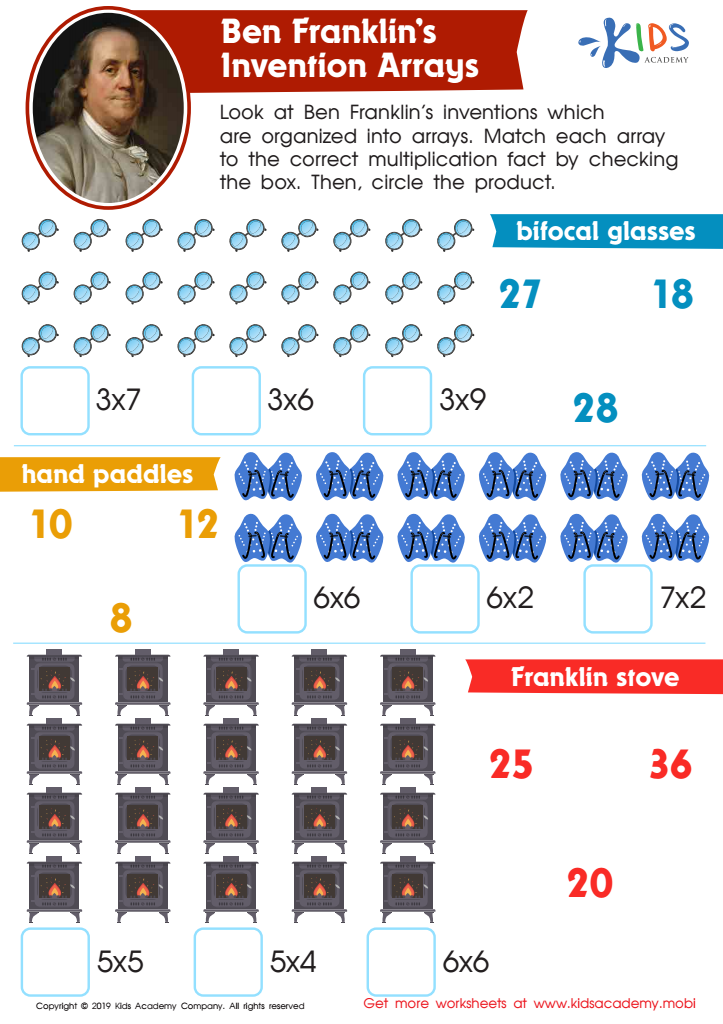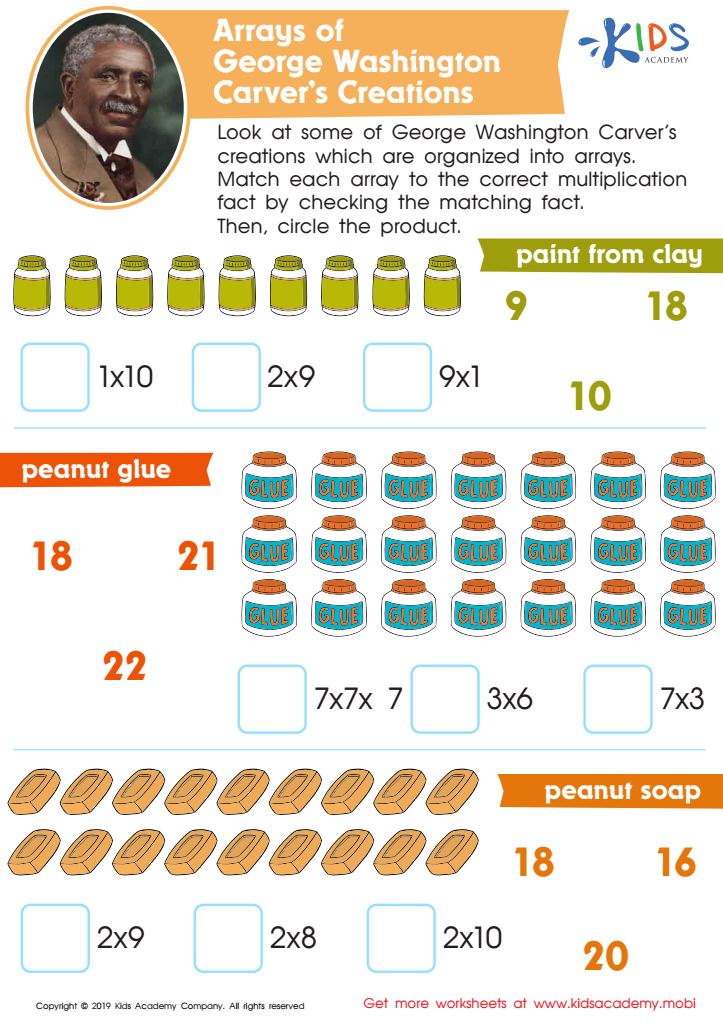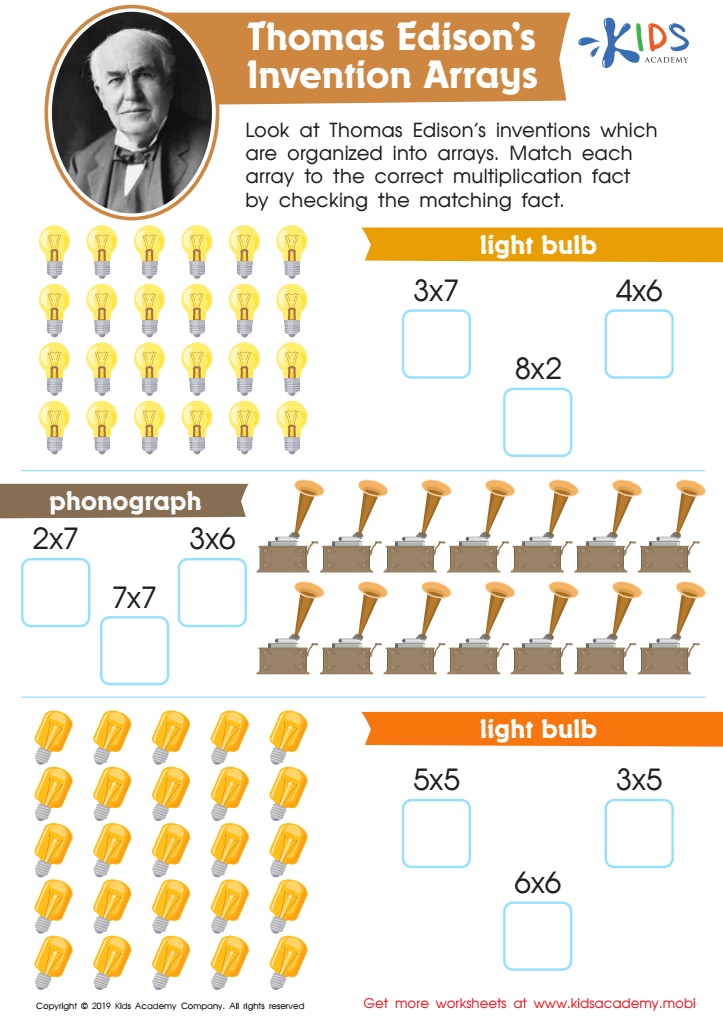Multiplication Arrays - Lesson for Grade 3, Chapter - Multiplication Facts
In the "Multiplication Arrays" lesson, designed for Grade 3 students and situated in the Multiplication Facts chapter of the Multiplication and Division unit, learners will embark on an engaging journey to understand the fundamentals of multiplication through the creative use of historical inventions. This lesson incorporates unique activities such as Ben Franklin's Invention Arrays Worksheet, Arrays of George Washington Carver's Creations Worksheet, and Thomas Edison's Invention Arrays Worksheet, alongside exercises that relate addition to multiplication and arrays.
Through these activities, students will learn to visualize multiplication as arrays, which are organized groups of rows and columns, aiding in the comprehension of how multiplication operates as repeated addition. This visualization technique is crucial for young learners as it builds a concrete understanding of multiplication concepts, making abstract ideas more accessible and easier to grasp.
Understanding multiplication arrays is important because it lays the groundwork for more advanced mathematical concepts, including division, area calculations, and algebraic thinking. By connecting these ideas to the innovations of respected historical figures, students not only learn multiplication in an interactive and enjoyable way but also appreciate the relevance of mathematics in the real world and its role in scientific and technological advancements.
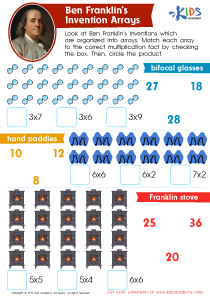

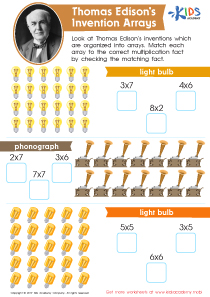
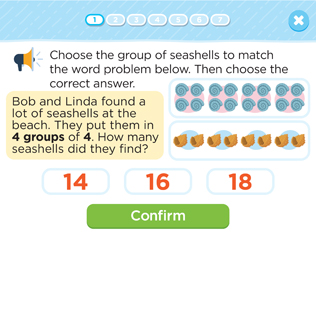
-
Activity 1 / Ben Franklin’s Invention Arrays Worksheet
Your child will learn that a lot of the cool and helpful things we use today were actually invented by some people long ago. Ask your child if they know some inventors of the popular things we all use today. For example, the light bulb was invented by Thomas Edison. The inventor in this worksheet is Ben Franklin. Look at Ben Franklin’s inventions which are organized into arrays. Help your kids match each array to the correct multiplication fact by checking the box. Then, circle the product.
-
Activity 2 / Arrays of George Washington Carver’s Creations Worksheet
Before beginning this worksheet, it would be a good idea to remind your child of what George Washington Carver created. They were more than one handy item. Can your child tell you what this man’s creations were? Look at his creations which are organized into arrays in this worksheet. Match each array to the correct multiplication fact by checking the matching fact. Then, help your little ones circle the product.
-
Activity 3 / Thomas Edison’s Invention Arrays Worksheet
What did Thomas Edison invent? Before getting into this worksheet, test your student’s knowledge on history and inventors by asking them this simple question. If they get the correct answer, you can give them some more information on other great inventors. Look at Thomas Edison’s light bulb inventions in this printout. They are organized into arrays. Ask your students to match each array to the correct multiplication fact by checking the matching fact.
-
Activity 4 / Relating Addition to Multiplication and Arrays - Quiz
This quiz assesses students’ ability to relate addition to multiplication.
